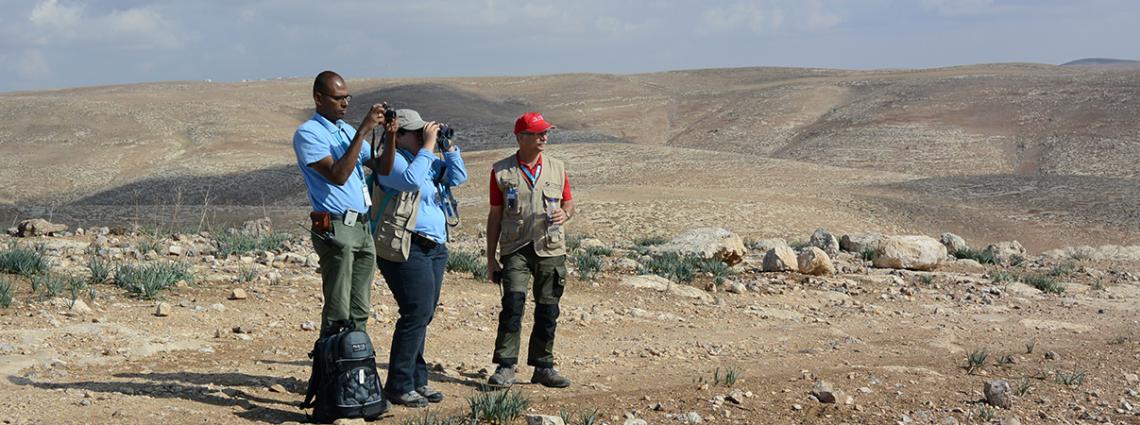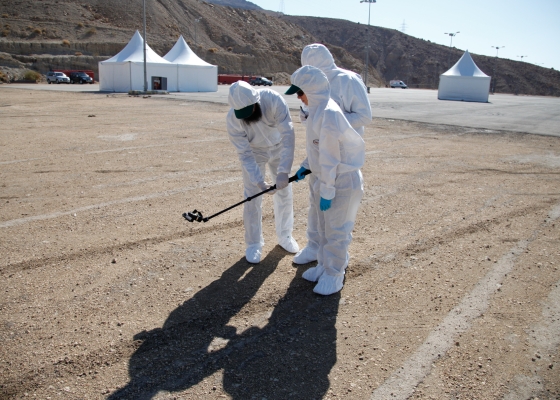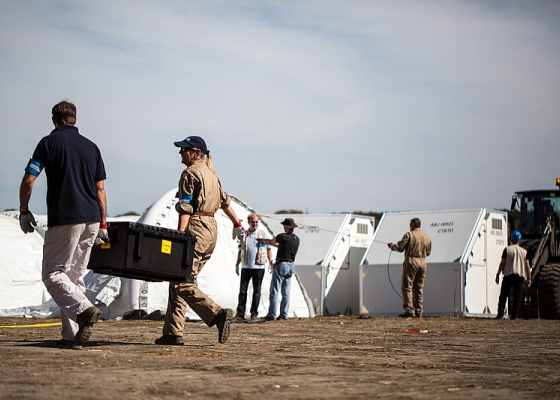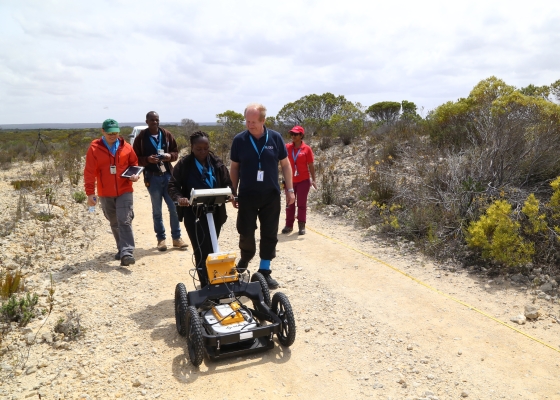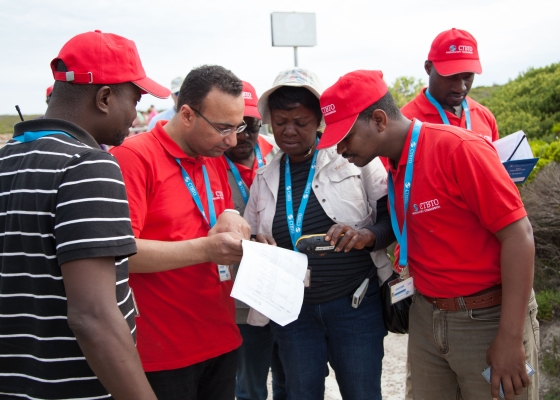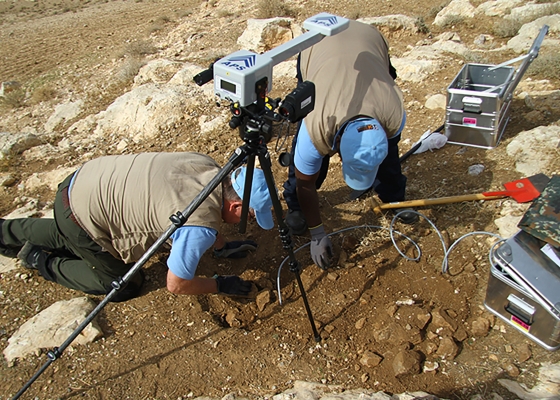On-site inspection
The final verification measure: on-site inspection
On-site inspection (OSI) is the final component of the Comprehensive Nuclear-Test-Ban Treaty (CTBT) verification regime. Once the Treaty enters into force, Member States will be able to request an inspection to gather further evidence on the ground if the global monitoring system detects a possible nuclear explosion. As well as establishing whether a nuclear explosion has been carried out, facts might also be gathered to identify who was responsible for a Treaty violation. It is the ultimate verification measure under the CTBT.
Until then, the CTBTO is charged with building up the on-site inspection capability – training potential inspectors, preparing equipment and a detailed Operational Manual, and testing procedures in exercises both in Vienna and in the field – so that the OSI capability will be ready when the Treaty enters into force.
A key benefit of an on-site inspection regime is that it deters potential violators from conducting nuclear explosions in the first place, and therefore increases confidence that states will comply with the Treaty.
An on-site inspection is a major operation requiring well-tuned and careful preparation and implementation. The CTBT prescribes how an inspection is triggered; how it is prepared and conducted; what techniques and procedures can be applied; which information an inspection report should contain; and what possible steps could follow the report’s examination by the Executive Council, the Organization’s main executive organ after entry into force.
Although not explicitly labeled as such, an on-site inspection under the CTBT is a challenge inspection, as it can only be carried out at the request of a State Party to the CTBT. The State Party subjected to such an inspection cannot refuse to allow it to take place.
The need for speed
Speed is of the essence; the various phases of an on-site inspection are measured in hours and days. The inspection team must arrive at the border of the State Party to be inspected only six days after the request for the inspection was lodged, meaning that the schedule for consideration and approval by the Executive Council, and for practical preparations by the Technical Secretariat, is very tight indeed.
This is mainly because the time window for obtaining some of the conclusive evidence for a Treaty violation is narrow. The occurrence of seismic aftershocks after an event declines with every passing day. Specific radioactive elements that may provide conclusive evidence of a nuclear explosion dissipate quickly due to their relatively short half-lives. An on-site inspection needs to start as soon as possible after a suspicious event, to gather crucial data.
The duration of an on-site inspection is also explicitly defined. The inspection team must submit a first progress report within 25 days after approval of the inspection by the Executive Council. Unless a majority of the Executive Council members decide to discontinue the inspection, it can last for up to 60 days. In exceptional cases and when the team considers an extension necessary, this time frame can be extended by 70 days to a total maximum of 130 days’ duration.
The requirements to prove a possible violation of the CTBT during an on-site inspection are unique, applying not only to the time but also to the identification of the inspection area. There is inherent uncertainty in estimating the location of certain triggering events. Therefore, the area to be inspected under the CTBT OSI regime has been set at a maximum of 1000 km². Since this is still a large area, monitoring data and their analysis need to contribute to reducing the level of uncertainty in the location estimates.
Balancing effective inspection with national interests
The Treaty provisions for the conduct of an on-site inspection strike a balance between an effective inspection and the protection of the inspected State Party’s national security interests. The inspected State Party must provide full access to the inspection area and give all necessary assistance to the inspection team to carry out its activities.
The inspection team, for its part, strives to conduct the inspection without causing undue disturbances for the inspected State Party. In addition, and upon request, the team must share all information, data and samples with the inspected State.
The Treaty requires a report to be prepared soon after the conclusion of the inspection, summarizing all findings. Based on this, the Executive Council makes a final assessment as to whether the Treaty has been violated, i.e. whether indeed a nuclear explosion has taken place.
Preparing for entry into force
Pending the CTBT's entry into force, CTBTO is working to build the on-site inspection capability through field tests, training, exercises, expert meetings, and workshops. The core elements being developed include: an operational manual containing all legal, technical, and administrative procedures; a list of equipment for use during on-site inspections; a programme for training of inspectors; and the acquisition, testing, and maintenance of OSI equipment.
Learn more about on-site inspection procedures and activities:
